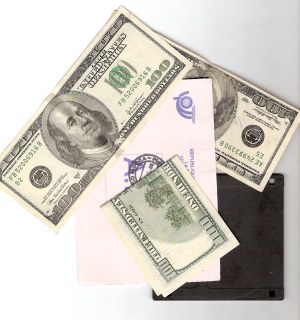|
|
Methods of Buying That Save Money
 It is also easy to enumerate methods of buying that save money; some however may be costly in time and involve the difficulty just discussed. For example, to save money it behooves the buyer to search out the dealer offering the desired good at the lowest price. But how far afield can the household buyer go in her quest for the lowest price? Taking her home as a center what is a reasonable radius for her market for "convenience" goods? How many trading centers should she include in her market for "shopping" goods and, within each, in how many shops should she search for the lowest price? Actually practical considerations limit greatly her shopping and buying area. Her time, except in the case of purchases with large unit cost, usually bought infrequently, is worth more than the possible saving in money; or, to put it in another way, the place and time utilities secured by buying at a near-by store are worth their cost in money. Little is known as to what variations in retail prices from shop to shop result from this or how long they persist. But so long as market areas of buyers overlap and there is a marginal group that can be attracted each day to a new shop by a low price, wide differences are not to be expected. When prices are advertised and buyers can order by mail or telephone the market area expands, a policy of purchase on the basis of comparative prices becomes more feasible, and price differences lessen.
Another way of reducing the money cost of a given volume of goods is by purchase at the bottom of seasonal price curves, watermelon in August, for example, sheets in January, coal in June. To apply this principle with any exactness buyers would need to know more about seasonal variations in prices than they do now and would need a system of market news organized for their benefit. In some cities announcement is made of the cuts of meat that are relatively low in price at each week end. The application of this method of saving money has its own difficulties. Winter coats are cheaper in December than in October but the bundle of utilities they constitute will have changed. Many buyers however may desire most the utilities still undiminished in December and can secure them by waiting without paying for others relatively less desired.
Buying in large quantity is sometimes urged as a means of reducing money costs but it is a rule that must be applied very cautiously or it will defeat its purpose. When what is left after the initial use is waste, it is highly important to buy exactly the quantity desired if possible. The major saving through "large quantity" buying comes through purchase in large rather than small containers. Occasionally one is able to secure a discount by purchase of a case of canned goods, a crate of apples or a twenty-five pound sack of sugar. Losses through spoilage and mistakes in calculating desires and the course of prices may offset the saving effected. One must even go cautiously in buying the larger container in case it provides more than enough to supply current needs. There is danger again of spoilage or of uneconomical use of a portion for a purpose for which a cheaper article would have been good enough.
Another method of reducing money costs is that just suggested, the purchase of each article in the cheapest form that will serve the purpose for which it is intended. There are many familiar examples of this branch of domestic economy, purchase of the cheaper cuts of beef for hash, pineapple in broken slices to be cut up for salad, of the juiciest oranges regardless of appearance for a beverage. Put in more general terms we arrive at a basic principle of economical buying: selection so far as possible of the bundle of utilities most desired and rejection of the bundle containing those which one does not desire to pay for. To apply this principle the buyer must know the qualities that make an article suitable for a particular purpose. The primary source of financial loss in buying comes through mistakes in selection. It is a mistake in selection to pay for utilities not desired or not to secure the best article available for the purpose for a given expenditure. What then are methods of buying that reduce mistakes?
|
|
This website is created and designed by Atlantis International, 2006
This is an unofficial website with educational purpose. All pictures, and trademarks are the property of their respective owners and may not be reproduced for any reason whatsoever. If proper notation of owned material is not given please notify us so we can make adjustments. No copyright infringement is intended.